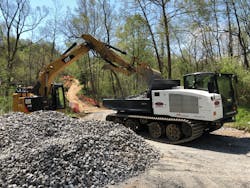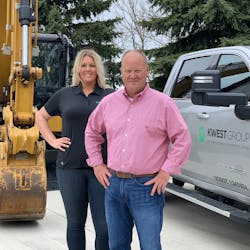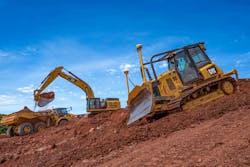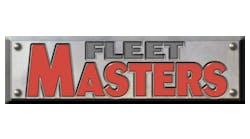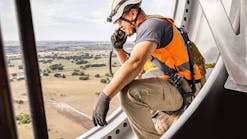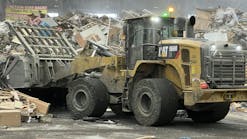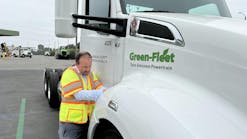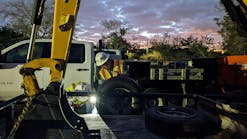The Ohio-based employee-owned civil construction and environmental services contractor had a mere eight employees 19 years ago. Today, it has grown to 250 employees licensed in 40 states, and Kwest also performs work in Guantanamo Bay, Cuba. During this period, it has managed the addition of dozens of pieces to its fleet, which includes 23 excavators, 27 dozers, 12 wheel loaders, 16 soil compactors, 30-plus skid steer loaders, 70 to 75 pickup trucks, 15 dump trucks, and over 100 trailers. At times, Kwest’s fleet is supplemented by rentals, to the tune of around 20 percent of the total make up.
But the company’s rapid growth, and the way it grew, meant that other departments needed more immediate attention than equipment. Plus, Kwest was starting after the asset purchase of another construction company, and many of the equipment policies were not easily applied to the smaller, start-up operation.
“The main focus when we were growing was developing our target markets and securing as much work as possible, as well as getting the Kwest name out there,” says Brooke Speiser, equipment operations coordinator.
“Mark [Murray, P.E.], who had started the company and is the managing partner, was focusing on developing business with our president, Ryan Odendahl, and I think that’s what they focused on the most,” Speiser says. “When Chad and I took over the equipment department, it was kind of like being fed with a firehose, along with cleaning a lot of stuff up. The policies that were in place at the time were just all over the board, but it was a blessing in disguise for us because we were able to mold the department in the way we wanted to, and the way we thought would be best.”
Once it was time for the equipment department to take the spotlight, a customer service mentality took over. “We wanted to make the department into something that was a service for the field,” Speiser says. “We’ve always said the guys in the field are our clients, they’re our company, so what’s the best way we can service our guys and make their job more efficient? In turn, that makes the company more efficient and profitable.”
McKee and Speiser saw a couple of obstacles right away. “The biggest hurdle we faced was getting everybody in the field on the same page as far as procedures to request anything they needed,” Speiser says. “Some equipment pieces and tools weren’t being tracked efficiently or appropriately coded. Then when the invoices came in, we didn’t know if they were accurate.”
The answer was the development of an app system to track and maintain all equipment requests, maintenance issues, small tools, haul moves, and available equipment.
“We took Form Stack and we internally manipulated them,” Speiser says. “I think the first one started out as a rental request, so everybody got the app. All of our foremen and superintendents have iPads and iPhones, so superintendents could request equipment and make it more streamlined. They’re able to request exactly what pieces they want, any attachments, then they add the onsite job contact, and any additional notes. It’s instantly sent to our emails so we’re able to see any request in real time.”
The equipment department can now track and inventory every item needed in the field and ensure timely delivery. Additionally, this allowed Kwest to increase cost efficiency by maintaining low stock quantities and reducing inefficiencies that had led to procurement waste.
“And I’m also able to take that [request] and forward it on to our dealers or manipulate it to find pieces I have available to fill that request,” Speiser says. “We then expanded it to maintenance requests, so [the field] is able to report any issue on any piece of equipment through these apps as well, all the information, and they can attach pictures to it. Those go straight to our maintenance guys and they’re able to see those in real time as well.”
Service overall has become more efficient, thanks to the app. “If a technician is in an area where somebody sends a maintenance request and the job is 20 miles down the road, they can easily hit that on their way back and take care of it,” Speiser says.
The maintenance app allows a quick assessment of the severity of an issue. Field personnel are also able to request any small tool, part, or safety item they need. The equipment department tracks the needs and typically delivers the items to the requester the next day.
In a relatively short time, the equipment team figures the tracking and the efficiencies resulting from the app and new procedures has already saved the company significant dollars in excessive rental equipment, forgotten items, lost small tools, and unnecessary purchasing.
In addition to developing the app and streamlining procedures for the field, McKee and Speiser found there had been neither the time nor manpower to devote to negotiating the best prices with dealers for new and rental equipment. They decided the best way to remedy the situation was to develop better relationships.
“For our footprint, we deal with quite a few dealerships across the U.S.,” McKee says. “We view it as a partnership between the dealer and Kwest Group; we’re both in it for the same end goal, and we treat it as such. It’s led to not only work relationships, but also personal relationships.
“Through the dealerships, there have been some really good negotiations, and we were able to get with the actual manufacturers to negotiate national rates that we can use during the bidding process,” McKee says. “It’s a huge win for the company, for the hard work Brooke and I have done. And the whole equipment team has really had skin in the game as far as creating those partnerships.”
Speiser says the relationships have led to money savings in ways not usually thought of. “When you have a partnership with somebody, they’re willing to help you out a lot more. An example would be warranty work,” she says. “With warranty work, they’re willing to honor that a lot more than if you didn’t have that partnership. And if we have equipment that’s rented and is broken down for notable periods of time, if we didn’t have that relationship with our dealership, they wouldn’t necessarily honor giving us credit on that kind of thing.”
McKee drills down even further. “Another example is that we make a commitment to use OEM parts more than a lot of our competitors do. Seeing that gives the dealerships and the manufacturers at the corporate level the confidence that we’ve done the maintenance, and that we’re going to have their best interests in our equipment during the maintenance program,” he says.
“So then if we do get into a discussion on warranty on a piece just beyond the hour or time limit, it makes the conversation a little easier because of the commitment we’ve shown to that specific manufacturer,” McKee says. “I like to look at things through other peoples’ glasses, and I ask them to look through ours when we have those types of conversations.”
Kwest also partners with dealers on technology. When 2019 started, the company had only 20 percent of its yellow iron reporting telematics data. By the end of that year, 99 percent of its equipment was reporting, along with its pickups, dump trucks, and trailers.
“The growth in telematics has been huge over the last couple of years and, again, we’re back to that commitment and that dedication that we give to our dealers to be able to get that commitment back from them [on technology],” McKee says.
“Right now, we’re normally tracking location and hour meters, but that is leading into idle time and fuel burn,” McKee says. “Those are the two biggest things that we’re trying to gather currently and share with the field.”
Telematics has had a major impact on Kwest’s preventive maintenance program, particularly because of more accurate hour reporting.
“We can now get ahead of the PM program so that we can trigger our services 50 hours ahead of when they’re due,” McKee says. “It’s a policy to do all of our maintenance per the manufacturers’ recommendations or better. We do tweak some things through oil analysis if we see trends calling for changing oil quicker. Final drives is an easy one to talk about. We see a lot of contamination issues on the final drives of skid steers; we touch our equipment every 250 hours, but we’ve increased that oil-change interval for these pieces because of trends that we’ve see through oil samples.
“A lot of it has been because of the harsh environments we work in,” McKee says. “Freezing and thawing conditions in the wintertime, or the dusty conditions in the summertime, force some of the issues we have.”
The equipment team also developed churn charts to help it determine the proper times to replace equipment and also to help guide its budgeting.
“We gathered internal history along with manufacturer’s recommendations as far as maintenance costs go, and we kind of merged both sets of information to come up with our own life expectancy for a class of equipment,” McKee says. “And we use that to populate the churn charts, evaluating what machines we think that we need to replace. At a given point of the year, we use those churn charts as a reference point. It’s playing a big role in developing our capex budget at the beginning of the year, and then that’s kind of our yardstick that we use throughout the year on what we replace and when we’re going to replace it.
“We’re also able to work with accounting to give them an idea of what quarter we think we’re going to be replacing what equipment,” McKee says.
Another goal for the Kwest equipment department in a busy and transformative 2019 was the establishment of benchmarking and best-case practices.
“We started by collecting historic data on each class of equipment and specifically every piece in our fleet,” McKee says. “Operating and ownership costs were noted and entered into churn charts and sweet spot charts to which we could then examine the life expectancy of our current fleet.
“We analyzed and compared our findings with the national standard of the amount spent on a piece of machinery before it should be retired,” McKee continues. “This data also helped us to gather projected cost per hour for maintenance and repairs. From there, we were able to implement a narrowed-down procedure on preventative maintenance work orders to stay ahead of the curve on the industry standard.”
Kwest also runs a weekly utilization report for all the worked hours on each piece of equipment.
“We take actual operating hours to weekly working hours and calculate the percentage worked on every piece for every job,” McKee says. “These reports are then sent to the foreman, superintendents, and project managers so they may review and avoid overspending on under-utilization costs at the end of the month.
We also work closely with the local Cat dealership to compare standard utilization to make sure we stay on track.”
Training has become a big focus, as well, both for safety, the company’s No. 1 goal according to McKee, and for the proficiency of equipment operators. Kwest brings all of its employees in twice a year for training.
“We purchased two simulators and a mobile training trailer for not only onboarding, but also for training our workforce,” McKee says. “We want to make everybody better, and something that we stress is promoting from within. The ‘B’ operators that want to be ‘A’ operators, we need to train toward that—we need to give them the tools to become a better operator.
“Training in-house is something that we’re pretty proud to be able to provide to our employees,” McKee says. “That speaks for recruiting, and that word gets out, not only about our safety record, but also for how our employees are treated within the company.” Kwest Group has an ongoing safety streak of 3 million manhours without a lost time injury or incident.
“We’re a family, and we treat each other as family members,” McKee says. “It goes back to that trust with employee ownership, and everybody plays a role in that. Everybody in the company has stop work authority. If you see an unsafe act on a job site, no matter who you are within the company, you can stop that act or activity until it is resolved. And it’s not frowned upon; it needs to happen for us to be a safe company like we are.
“It’s a team effort,” McKee says. “The success of our equipment department is the result of the effort of every team member, and each of them has played a huge role in driving that achievement.”
